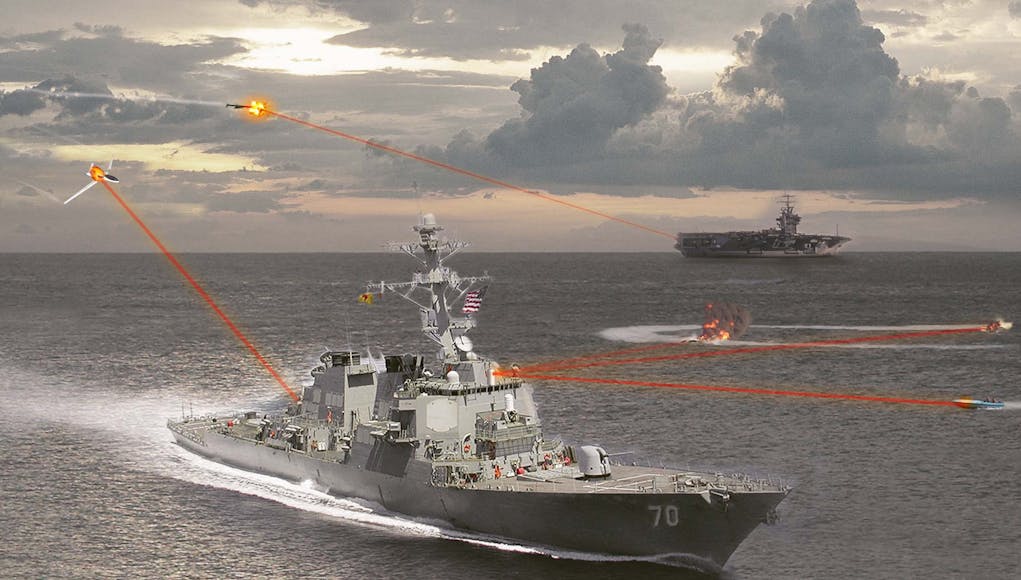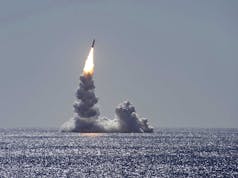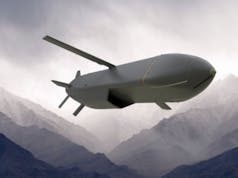Rolls-Royce LibertyWorks say it has achieved significant technology milestones by demonstrating an integrated power and thermal management system for high-power defensive directed energy applications.
LibertyWorks, an American subsidiary of Rolls-Royce, was established in 1995 as a result of Rolls-Royce plc’s acquisition of the Allison Engine Company.
The milestones include advances in electrical power, thermal management capacity, temperature management and control, instantaneous power availability and continuous operations.
The technology designed and tested by Rolls-Royce LibertyWorks is the culmination of over ten years of research and development for power and thermal solutions.

Mark Wilson, Rolls-Royce LibertyWorks, Chief Operating Officer, said:
“These milestone achievements serve as a foundation to provide our customers with an operational solution to provide endless power capability today. This enables directed energy customers to move past current low-power, low duty-cycle demonstrations by solving many of the difficult issues integrating high-power output with matching levels of thermal management. The Rolls-Royce LibertyWorks technology demonstrator is proving out capability suitable for ground, naval and air platforms.”
Rolls-Royce say that it is conducting final testing with the integrated power and thermal management system technology demonstrator at the LibertyWorks facility in Indianapolis, US, and will move to customer field testing later this year.
The primary objectives of the project include creation of a system that could power directed energy applications across multiple customer platforms.
According to the firm in a release, the design requirements for the project were created two years ago and have now been fully verified via testing. These include:
- 300kW electrical power
- 200kW thermal management capacity
- Precise temperature management and control
- Instantaneous power availability coupled with “endless magazine” continuous operations – the system can provide the power and thermal management needed to be operated continually as long as there is fuel available
- Size, Weight & Power (SWaP) densities required for military applications – sized to fit in US Army vehicles and US Navy ships
- A pathway to supply modular integrated power and thermal management capabilities with multiple applications such as US Army Family of Medium Tactical Vehicles, Navy Littoral Combat Ship, or base defense protection.













Ladies and Gentlemen this development by Rolls-Royce is a step change in being able to field laser based weapons system. This is because everything that is needed to power the laser is contained within a iso sized pallet. This means it could easily be mounted aboard a ship, or on the back of large truck.
The system uses a M250 gas turbine from a little bird/Kiowa as the main power source, this charges batteries which in turn feed a capacitor bank. The whole system is cyrogenically cooled to manage the thermal build up.
This system has the capability to power a 100KW laser, but more importantly allows multiple firings very quickly due to the fast capacitor recharge time. Because a laser is inherently inefficiency, you require a surplus of electrical power to power it. As shown in this case three times to power a 100KW laser.
“Phasers on stun, Captain”
Another piece of the puzzle slots into place …
It’s all coming y nicely guys.
We’ve always believed one day the laser would become a real-life weapon; and not just the creation of screenwriters. I’m very happy to see RR in the mix as this weapon system must be the most challenging development yet?
Does anyone know what the destructive range of a 100kw laser would be in ideal conditions? Are we talking a few miles or 10’s of miles?
I’m not sure whether destructive range counts as destroying the threat, or just preventing it hitting you by blinding it or otherwise stopping it working. Although if you are the target it doesn’t really matter! The perennial problem always remains that you have to point the device at the incoming threat, and the threat and the laser mounting are always moving. With a laser, because the energy is so concentrated into a very narrow beam this is a difficult problem to solve.
An industrial laser cutter uses around 3500 W to cut 3mm thick aluminium sheet at a distance of 50mm. A military laser will therefore require a lot more power to do the same at a distance of say 1Km. Admittedly a drone, missile or aircraft will use much thinner ally or composite skin.
However, due to spot dispersion and refraction from atmospherics, lasers such as Dragonfire have started out at 50KW but with the ambition of reaching over 100KW when fielded. The higher the power of the laser partially mitigates atmospherics, but also means on a perfect day the destructive range is increased.
The distances that a 100KW Dragonfire like laser should defeat unarmoured targets should still be compared to current CIWS.
Exciting stuff. Thanks for the info.
Even at Phalanx range it would seem to be quite worthwhile (ignoring any cost differential) because if you look at Phalanx rate of fire (4,500 rounds per min) vs ammo stored (1,550 rounds) that only gives it just under 21 seconds of continuous fire. It operates with short controlled bursts of course so I’m not sure how many likely-to-be-successful engagements that gives it (how long are the bursts and how many typically necessary to intercept a target?) but I would think it must be reasonably low. RR make a point of talking about “Instantaneous power availability coupled with “endless magazine” continuous operations” and that is a huge benefit I would have thought.
I learned the power of capacitors early on messing around with electronics one day when I was about 10. I had a pretty big capacitor, probably the size of a 330ml soda can or maybe even a bit bigger (not sure what I got it out of), that I’d charged up. I was wiring it up carefully, one terminal at a time being careful not to short it out (I know, an idiot messing with a charged capacitor, but I was 10 or maybe younger at the time – it’s amazing I survived my childhood with the number of mains shocks I got growing up). What I hadn’t accounted for was the electrostatic force so when I had the screwdriver tip touching one terminal I let the shaft of the screwdriver get a bit too close to the other terminal and the electrostatic force pulled it down with really quite a lot of force (I couldn’t fight against it although I tried) to form a circuit. There was an almighty spark as it discharged through the screwdriver, and the discharge energy in the capacitor actually melted 75% of the way through the shaft of the screwdriver. It was a full-sized screwdriver with a shaft maybe 3mm or 4mm thick and after the discharge there was a section of the shaft melted such that there was only a thin 1mm bit in the middle connecting the handle to the tip. Big capacitors are scary!
I can emphasise with that. I am now going to show my age. When I was at Poly, we had a Navy Sea Slug Radar to “play with”. It used a lot of valves but also some hefty capacitors. The power capacitors were oil cooled. After a while of operating a luminous halo would surround them and if they leaked a plasma discharge would happen. Our instructor had been belted by a plasma arc when he was serving in the Navy. He had a RF Burn on his shoulder that continuously wept puss – pretty grim. He got the burn from a leaking capacitor that he happened to be near when checking something out. It kind of put into perspective how dangerous very high voltage can be. Also if you were working near the capacitors when the radar was operating you had a limited exposure time of 15 minutes. Because the pulsing capacitors would give you a severe headache. However, in a slightly weird way it was kind of fun watching, whoever says they don’t like electricity because they can’t see it. Well with old pre-semi conductor high power radios and radar you certainly could.
Reminds me of the capacitor banks used in shallow seismic surveys. They would drive an electrostatic plate mounted on a catamaran as a sound source. The ‘Bang Boxes’, as the capacitor banks were known’ were treated with huge respect, especially in salty, humid conditions. The main switch was never touched by hand….always with a long broom handle!!!!
Nice job LibetyWorks and RR.